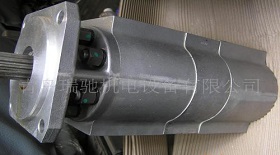What are the other requirements for installation of hydraulic pump tubing?
1. Oil suction pipe should be as short as possible and the inner diameter should not be too small. When the intake pipeline is long, the diameter of the burst pipe needs to be increased to avoid insufficient oil absorption due to too large flow resistance. The inlet flow velocity is generally 1-2 m/s.
2. The drain pipe of the pump is used to drain the oil leaking from the pump back to the tank, and at the same time it plays the role of cooling and discharging the debris produced during the operation of the pump. The drain pipe should be as short as possible. If it exceeds 2m, the diameter should be increased to ensure that the return oil pressure in the pump shell should not be greater than 0.05MPa, so as to avoid damaging the shaft seal of the pump. Therefore, the drain pipe of the pump should not be connected with other return pipes of the hydraulic system, so as to avoid the pressure shock wave of the system passing through the pump shell, destroying the normal operation of the pump or causing the lack of lubricant in the pump shell, forming dry friction, causing burns and damage to the friction pairs. The drain pipe of the pump should be separately put into the tank and inserted below the liquid level of the tank to prevent air from entering the hydraulic system.
3. In order to prevent the vibration and noise of the system caused by the vibration of the pump transmitted along the pipeline, a hose can be installed at the suction and pressure outlets of the pump. The length of the hose should not exceed 600 mm. The hose of the suction port should have a certain strength to avoid the deformation caused by the vacuum in the pipe.
I am looking forward to visiting Hydraulic Exhibition.



